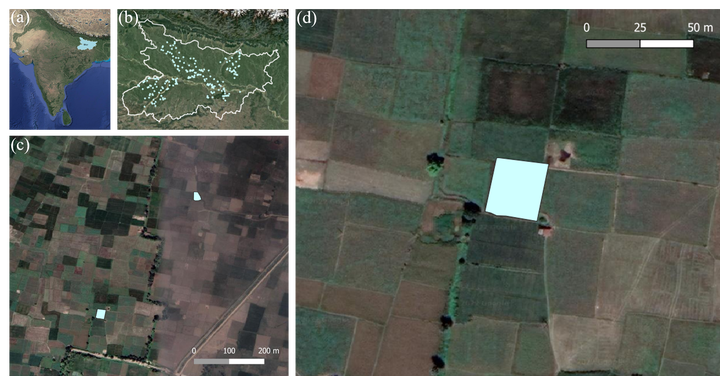Climate Adaptive Agriculture in the EGP

Agricultural transformations have increased food production five-fold in South Asia over the past four decades. The Eastern Indo-Gangetic Plains (EGP) spanning North India, Bangladesh, and Nepal, however, is a region marked by large crop yield gaps, underdevelopment, and widespread poverty. Meeting future food demand while coping with climate change will require substantial adaptation in smallholder systems in the EGP. The potential of this region to maintain current food production levels, and the extent of smallholder adaptive strategies remains largely unknown. In this work, we aim to answer the question: What is the adaptive potential of smallholder agriculture in the EGP? Our central hypotheses are: H1) Smallholder farmers have already adapted to a changing climate by planting earlier, adopting faster maturing crop varieties, and switching crop types. H2) These adaptive practices have mitigated the adverse effects of climate change on crop yields. And, H3) additional transformations will further increase crop yields and resilience, but their widespread adoption must overcome existing socioeconomic barriers. These hypotheses connect directly to our project’s key objectives and deliverables:
• Objective 1: Map crop types and the timing and duration of specific growth stages across the EGP using classification and phenological algorithms applied to time series of fused heterogeneous satellite imagery (H1).
- Deliverables: annual-cadence maps of crop types and growth stages at field scale; training and validation datasets for over 12,000 EGP fields
• Objective 2: Detect and characterize spatiotemporal patterns of climate-adaptive agricultural strategy adoption in the EGP from 2001-present, and quantify their effect on crop yields and food production (H1 & H2).
- Deliverables: maps and estimates of adaptive practice adoption rates and the relationship
• Objective 3: Quantify the adaptive potential of EGP smallholder agriculture under future climate change and adaptive strategy adoption scenarios (H2 & H3).
- Deliverables: quantification of food production potential under various adaptive strategy scenarios and 2050 climate
• Objective 4: Understand farmer attitudes towards, and experiences with climate-adaptive agriculture, and barriers to adaptive practice adoption (H3).
- Deliverables: household survey results and quantitative causal analyses to identify adaptive opportunities and constraints, and their spatial patterns
Achieving these objectives will: 1) advance needed, actionable knowledge about the adaptive potential of smallholder agriculture through new datasets, analyses, and a fuller understanding of farmer perspectives, and 2) provide guidance to promote food security, poverty alleviation, and a more resilient and sustainable food future for the EGP.